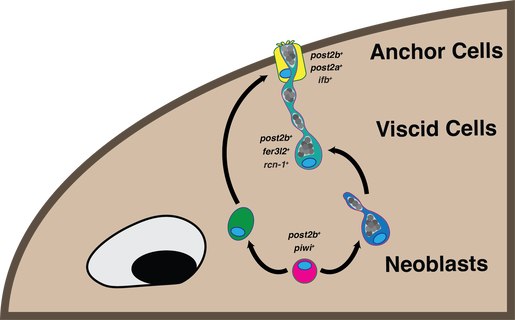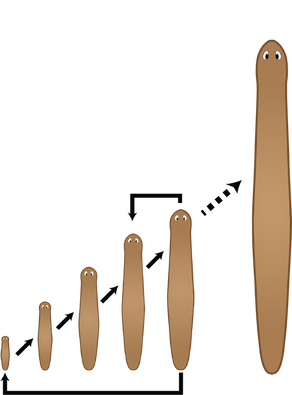Hox Gene Regulation of Asexual Reproduction
|
Hox genes, evolutionarily conserved transcription factors with essential roles in animal development, are well known for their roles in embryogenesis. However, their functions in adult tissues are poorly understood. We identified a role for the planarian Hox gene Post2b in the specialized epithelial and secretory lineages (anchor cells and viscid cells, respectively) underlying asexual reproduction (Arnold et. al. 2021). This project aims to determine the molecular and cellular basis by which Post2b regulates cell fate commitment to give rise to organs underlying asexual reproduction.
|
Hox Gene Regulation of Body Size
|
The size of animals with nearly identical body plans can differ over a million-fold. While plenty of attention has been devoted to the influence of environment, and rate and duration of growth during embryogenesis, the intrinsic mechanisms ensuring that animals grow to their final set size and no further are unresolved. Planaria maintain and regenerate their body form via constant cellular replenishment from the progeny of adult pluripotent stem cells. Despite this seemingly unlimited growth potential, planarians exist in a limited size range, indicating innate mechanisms restricting body size. We recently identified a role for the Hox gene Post2b in limiting body size. This project aims to resolve the molecular and cellular basis of Post2b-mediated size restriction.
|
Image Credit: Collaboration with Stephanie Nowotarski of the Stowers Institute of Medical Research


